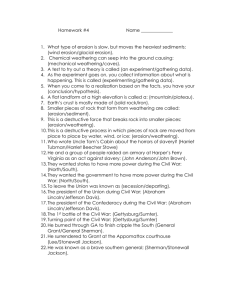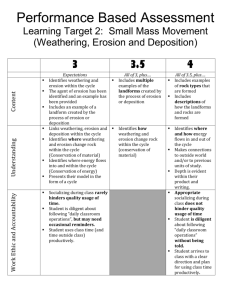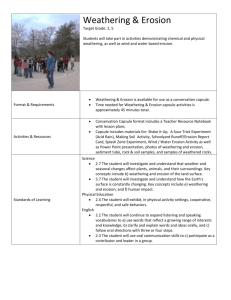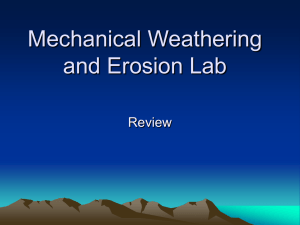Ch 23.1 – 23.4 Study Guide
advertisement
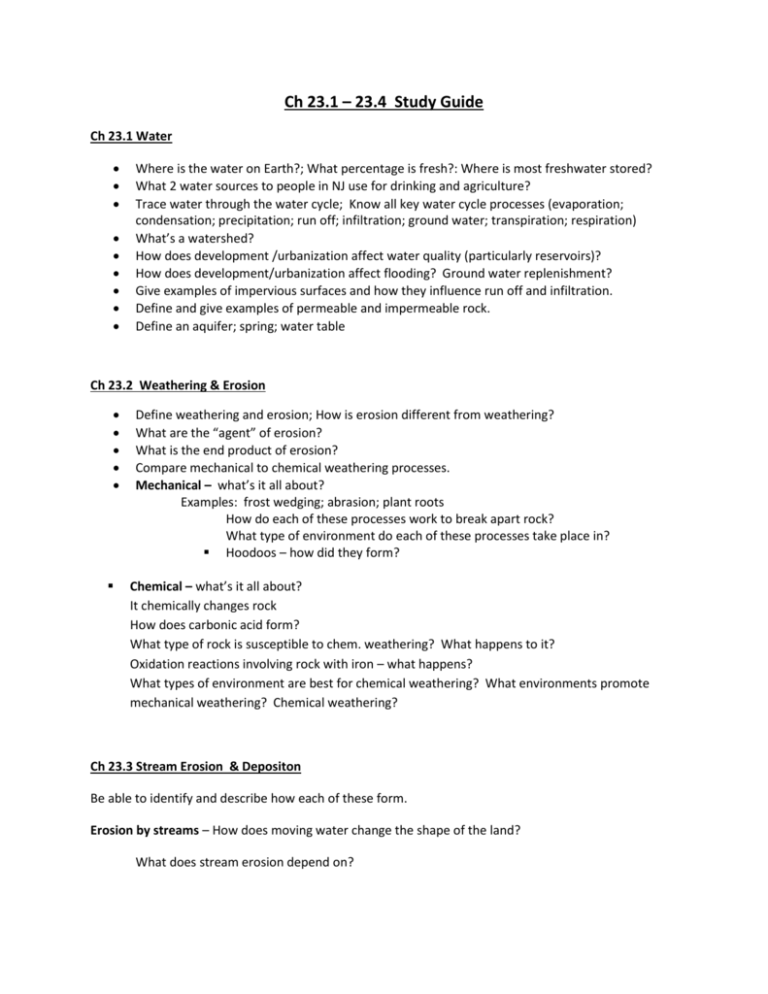
Ch 23.1 – 23.4 Study Guide Ch 23.1 Water Where is the water on Earth?; What percentage is fresh?: Where is most freshwater stored? What 2 water sources to people in NJ use for drinking and agriculture? Trace water through the water cycle; Know all key water cycle processes (evaporation; condensation; precipitation; run off; infiltration; ground water; transpiration; respiration) What’s a watershed? How does development /urbanization affect water quality (particularly reservoirs)? How does development/urbanization affect flooding? Ground water replenishment? Give examples of impervious surfaces and how they influence run off and infiltration. Define and give examples of permeable and impermeable rock. Define an aquifer; spring; water table Ch 23.2 Weathering & Erosion Define weathering and erosion; How is erosion different from weathering? What are the “agent” of erosion? What is the end product of erosion? Compare mechanical to chemical weathering processes. Mechanical – what’s it all about? Examples: frost wedging; abrasion; plant roots How do each of these processes work to break apart rock? What type of environment do each of these processes take place in? Hoodoos – how did they form? Chemical – what’s it all about? It chemically changes rock How does carbonic acid form? What type of rock is susceptible to chem. weathering? What happens to it? Oxidation reactions involving rock with iron – what happens? What types of environment are best for chemical weathering? What environments promote mechanical weathering? Chemical weathering? Ch 23.3 Stream Erosion & Depositon Be able to identify and describe how each of these form. Erosion by streams – How does moving water change the shape of the land? What does stream erosion depend on? V- shaped valleys; meandering streams (how do they develop); flood plains; oxbow lakes; makes canyons Depositional Features: Deltas and fans Erosion by Glaciers – How does this change the shape of the land? U- Shaped valleys; Horns; Glacial lakes; Erratic boulders; Till: Morraine What are the 2 types of glaciers & how do they form? How do they move? Erosion by Groundwater – Mostly chemical weathering & erosion How do caves form? What type of weathering? What type of rock is usually involved? Caves & Sink holes Erosion by Wind – How does it change the surface of the land? Loess & Dunes Depositional Features: Deltas & Alluvial fans

